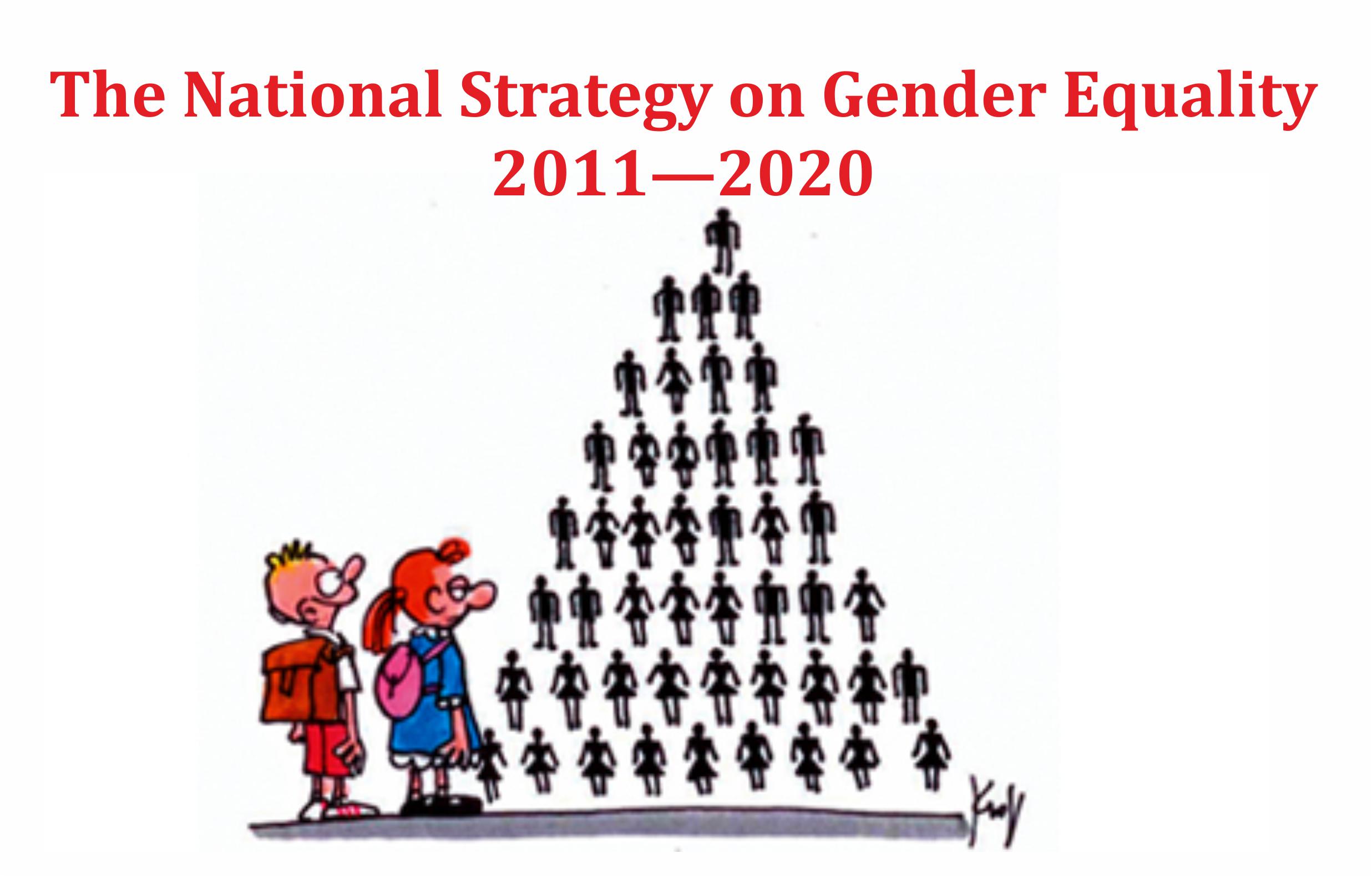The National Strategy on Gender Equality 2011 - 2020
2. Objectives of the Strategy
a) General objective:
By 2020, basically, ensure essential equality between men and women on opportunities, participation and enjoyment in political, economic, cultural and social sectors, so that contributes to the rapid and sustainable development of the country.
b) Specific objectives:
* Objective 1: Strengthen women’s representation in leadership and management positions in order to gradually reduce a gender gap in politics.
- Target 1: Efforts to be made so that the rate of women representing in the Party’s committees at different levels will reach 25% and above for the term of office between 2016 and 2020; the rates of female members of the National Assembly and People’s Councils at different levels will reach 30% and above for the term of office between 2011 and 2015 and more than 35% for the term of office between 2016 and 2020.
- Target 2: Efforts to be made so that by 2015, 80% of Ministries, the ministerial-level agencies, the agencies attached to the Government, the People’s Committees at different levels must have women among their leaders and by 2020, 95%.
- Target 3: Efforts to be made so that by 2015, 70% of the Party’s and State agencies and socio – political organizations with women making up 30 per cent and above of their labour force must have women among their leaders and by 2020, 100%.
* Objective 2: Narrow the gender gap in the economy, employment and labour; Increase the access of poor women in rural areas and ethnic minority women to economic resources and labour market.
- Target 1: Annually, ensure at least 40% of each sex (men and women) in the total number of people finding newly created jobs.
- Target 2: The rate of women who are entrepreneurs will reach 30% by 2015 and 35% and above by 2020.
- Target 3: The rate of rural female labourers under 45 years of age who are vocationally and technically trained will reach 25% by 2015 and 50% by 2020.
- Target 4: The rate of female labourers in poor rural areas and ethnic minority regions in need who get concessionary loans from programs for employment and poverty reduction and other formal credit sources will reach 80% by 2015 and 100% by 2020.
* Objective 3: Improve female human resource, gradually ensure equal participation of men and women in education and training.
- Target 1: The literacy rate of men and women aged from 15 to 40 in isolated, remote, ethnic minority and extremely difficult regions will reach 90% by 2015 and 95% by 2020.
- Target 2: The rate of women who have master’s degree will reach 40% by 2015 and 50% by 2020. The rate of women who have PhD’s degree will reach 20% by 2015 and 25% by 2020.
* Objective 4: Ensure gender equality in accessing and recieving health care services.
- Target 1: The sex ratio at birth will not exceed 113 boy-babies/100 girl-babies by 2015 and 115/100 by 2020.
- Target 2: Reduce the maternal mortality ratio below 58,3/100.000 live births by 2015 and below 52/100.000 live births by 2020.
- Target 3: Increase the rate of pregnant women, who have access to services for caring and preventing HIV transmission from the mother to the child, up to 40% by 2015 and 50% by 2020 in comparison with 2010.
- Target 4: Reduce the abortion ratio below 27/100 live births by 2015 and below 25/100 live births by 2020.
* Objective 5: Ensure gender equality in culture and information.
- Target 1: By 2015, reduce 60% of gender-biased culture and information products and by 2020, 80%. Increase broadcasting time for programmes, columns and quantity of propagandic and educational products on gender equality.
- Target 2: By 2015, 90% and by 2020, 100% of national and local radio and television stations shall have their column, special subject for awareness raising on gender equality.
* Objective 6: Ensure gender equality in family; step by step eliminate gender based violence.
- Target 1: Reduce the time engaging in housework of women in comparison with men by two times by 2015 and by 1.5 times by 2020.
- Target 2: By 2015, 40% of identified victims of domestic violence shall receive counseling services on legislation and health and shall have support and care from helping centers for domestic violence victimes and by 2020, 50%. By 2015, 70% of identified perpetrators shall be counselled at the domestic violence prevention counselling centers and by 2020, 85%.
- Target 3: By 2015, 100% of trafficked victims, who return by themselves or by authorities or who are rescued, shall enjoy supporting and community integration services and this rate shall be maintained up to 2020.
* Objective 7: Enhance capacity of state management on gender equality.
- Target 1: By 2015, 80% of draft legal documents with contents related to gender equality or with gender inequality issues, gender based discrimination shall be gender-mainstreamed and by 2020, 100%.
- Target 2: By 2015, 100% of members of Drafting Boards, Editing Teams responsible in formulating the draft legal documents with contents related to gender equality or with gender inequality issues, gender based discrimination shall be provided training on gender knowledge, gender analysis and mainstreaming skills and this rate shall be maintained up to 2020.
- Target 3: By 2015, provinces and and centrally-run cities shall have full time staff on gender equality; Set up a network of collaborators, volunteers working on gender equality and women’s advancement and these shall be maintained up to 2020.
- Target 4: By 2015, 100% of cadres and staff working on gender equality and women’s advancement at all levels and sectors shall be professionally trained at least one time and this rate shall be maintained up to 2020.
Full text of the National Strategy on Gender Equality: qd2351nationalstrategyongendereq.pdf

- Hôm nay 507
- Tổng lượt truy cập 6,864,687


Bình luận từ Facebook
Phản hồi